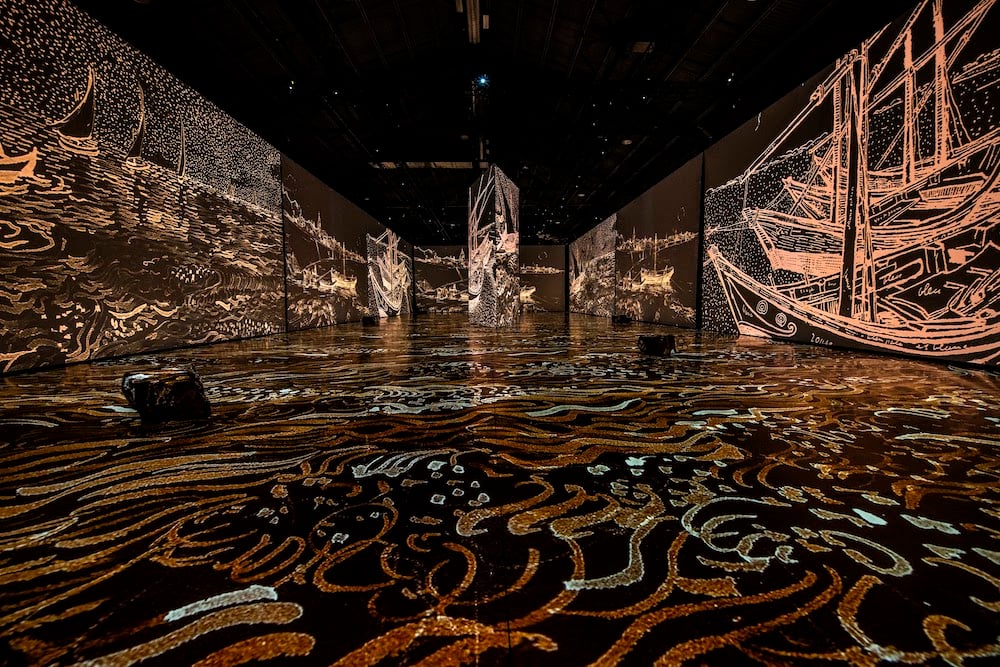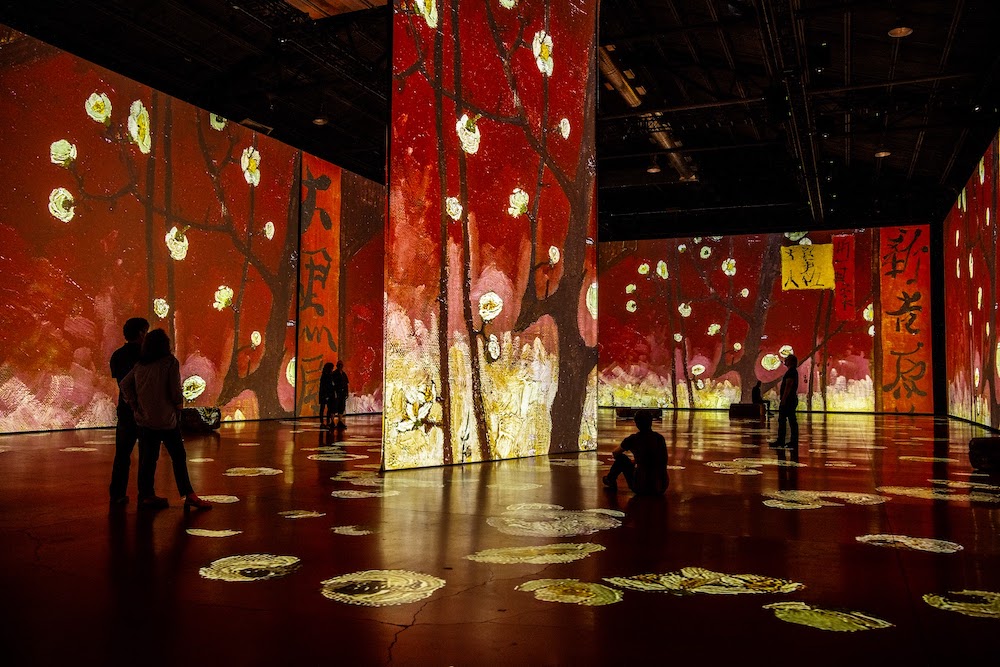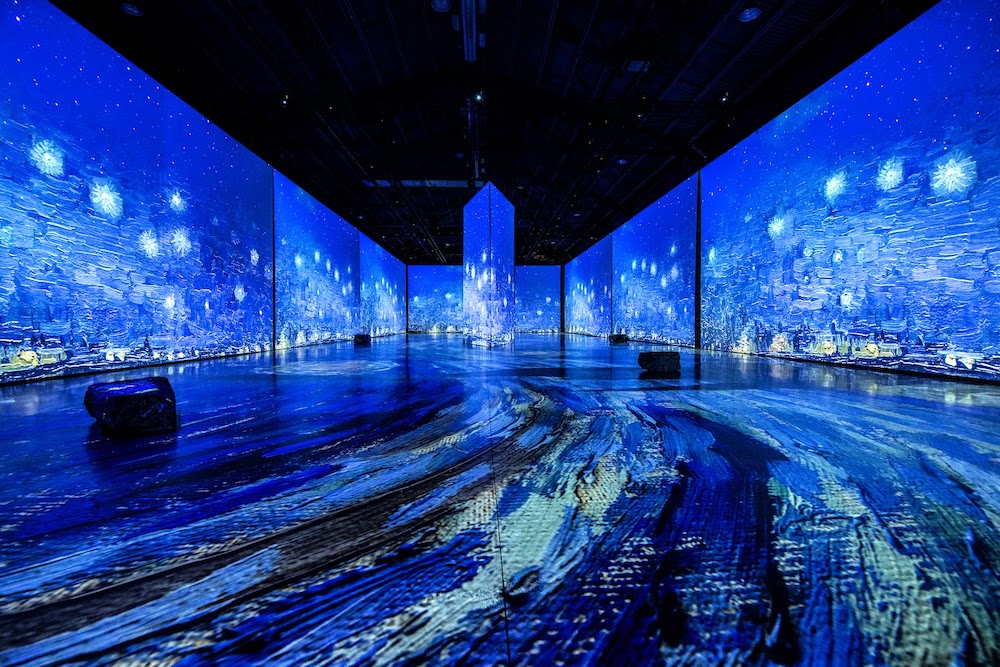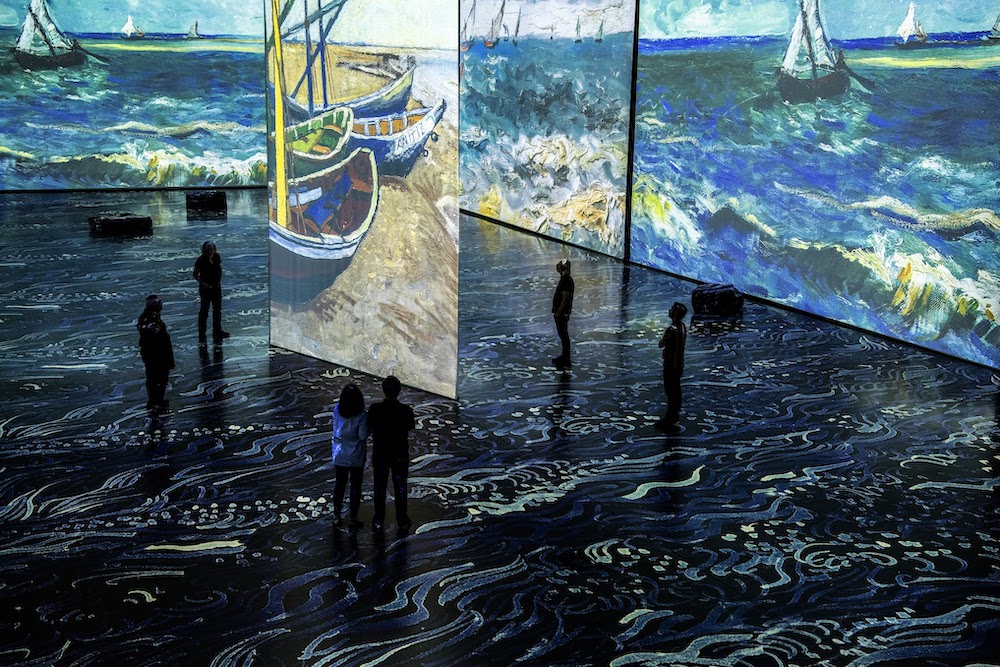What else is there to say about Vincent van Gogh? There’ve been multiple films, TV shows, books, songs and entire museums dedicated to his work. And now there are three different immersive exhibitions around the globe offering splendiferous new experiences of his drawings and paintings.
The Imagine Van Gogh immersive exhibition currently at the Vancouver Convention Centre is big — 25,000 square feet big, to be exact.
The concept was to expand the artist’s famous images to sky-high proportions, blanketing the walls, the floor and the ceiling with the swirls and daubs of colour. At the entrance to the show, a convention centre employee gave me the rundown of how to behave while inside — don’t touch the walls, stay six feet apart from others, no flash photography, and don’t lie down on the floor. I laughed at the last one, and in response he offered, “You’d be surprised.”

All the biggies are here: Starry Night, Sunflowers, Bedroom in Arles, et al. It’s like a K-Tel record of art, if that record also contained a pastiche of classical hits like Delibes’ Flower Duet from the opera Lakmé, Satie’s Gynopediés and Prokofiev’s Romeo and Juliette, which play on speakers at the exhibit. I’m not sure what these pieces of music have much to do with Van Gogh other than being roughly contemporaneous with the artist’s final years, but they’re familiar from constant use, and more importantly they offer the right mixture of melancholia and prettiness to accompany the experience, with a certain flavour of old-school European culture.
Walking through the show at the convention centre, I found myself thinking about Liberace. Before he went full glam-o-rama, Liberace had a weekly 30-minute TV program that featured the pianist playing showy versions of classical standards. It was the first time I remember hearing the word bowdlerize. I had no idea what it meant, but when I heard it in connection with Liberace’s outsized renditions of Chopin and Rachmaninoff, I knew it wasn’t good.
This isn’t to say that the Imagine Van Gogh does a Liberace rendition of the artist, but there’s more than a whiff of showoff here. To be fair, it’s not really meant for the snooty art folk, but more for people to take their elderly mother or small children to see. The sheer scale, not to mention price tag ($39.99 to $49.99 for adults, $34.99 to $44.99 for kids) are a world away from smaller galleries. It’s designed to be a crowd pleaser, and that’s fine.
The French duo of artistic director Annebelle Mauger and Julien Baron created the touring exhibition based on the Cathédrale d’Images. The original show featured images projected on the walls of an abandoned limestone quarry a scant few kilometres from the sanitarium that was home to Van Gogh in his final years.

In an interview about the show, Mauger explained the concept as a means to get inside of the artist. “I think it changes the proximity you have with the paintings. When you go to a museum, you can’t get closer than one metre to a painting, but when you’re in front of these large projections, it feels like your nose is touching the painting. That distance between you and the work is gone, and you can go inside it, and see details you didn’t notice. Some of Van Gogh’s brush strokes look so violent, but from up close you can see that everything is soft and curved. It was very important for us to show that.”
It’s hard to go wrong with Van Gogh; the work is still great. But I couldn’t help but wonder what the artist would say to see the terrible details of his poverty, mental illness and struggle splashing the walls at elephantine size. (The infamous portrait of Vincent with his bandaged ear is painful enough on a human scale; at 80-feet high, it’s almost unbearable.) Would any artist want to have people see brushstrokes magnified to such an extent? It feels strangely inappropriate, even creepy in a way, like peering up someone’s nose to see how their brain works.
To be honest, Van Gogh has always made me sad, so the Imagine Van Gogh exhibition is akin to having a SUPERSIZED helping of SADNESS. Other folks at the exhibition with me seemed to be having a perfectly pleasant time, snapping selfies and filming the action on their cell phones. I love a good immersive experience as much as the next guy, but there is something about the show that feels odd.
Maybe it’s just that, looking at the huge swathes of colour, brush strokes blown up to such an extent, they lose all scale and become abstracted versions of themselves. I wondered how something that started out in a such a humble fashion — a man painting a picture of some flowers — ended up as a multimillion-dollar industry, with three different competing shows all vying to offer audiences an overwhelming experience.

Or maybe it’s the magnification of the idea of the mad genius artist. The big story sucks away at the smaller, less dramatic details. It’s always a shock to come face to face with his actual work in places like the Van Gogh Museum in Amsterdam. The sketches, paintings and studies are far smaller than one might expect, given the artist’s outsized reputation. But nonetheless, their very humbleness is what gives them a certain presence. They don’t pretend to be anything other than what they are — an artist’s attempt to capture what he sees.
Van Gogh isn’t the only artist to get the big projection treatment. Monet, Chagall and Gustav Klimt are all slated for the same thing. If the experience of seeing these types of show creates interest is seeing more art, that’s good, but you can’t help but wonder if the sheer spectacle of exhibitions like Imagine Van Gogh creates expectations that art should be outsized, loud and circus-like.
It’s hard to have a personal moment with a work of art in this kind of atmosphere, and if there is any painter who deserves this smaller, more intimate degree of attention, it is old Vincent Van G. To steal a line from singer Jonathan Richman’s ode to the artist, “He loved, he loved, he loved life so bad, his paintings had twice the colour other paintings had.... He loved colour and let it show.” ![]()
Read more: Art
















Tyee Commenting Guidelines
Comments that violate guidelines risk being deleted, and violations may result in a temporary or permanent user ban. Maintain the spirit of good conversation to stay in the discussion.
*Please note The Tyee is not a forum for spreading misinformation about COVID-19, denying its existence or minimizing its risk to public health.
Do:
Do not: